Sneaker-hype, sneakerheads, sneaker culture...why is it so big? Why is it such a luxury? And why is it growing like crazy?
By 2026, sneakers will account for a $120 billion market. The rising interest in sneaker culture seems obvious when looking at people passing by during rush hour in Amsterdam.
People dress up for work. Wear long formal coats. Men and women in suits. And on their feet – sneakers??
It’s not uncommon to see New Balance paired with formal wear in the streets of a cosmopolis. If you keep track of the latest fashion, sneakers like this uplift an outfit rather than make it ‘informal’. Slowly, streetwear is striking a balance between high fashion and, well, street fashion.
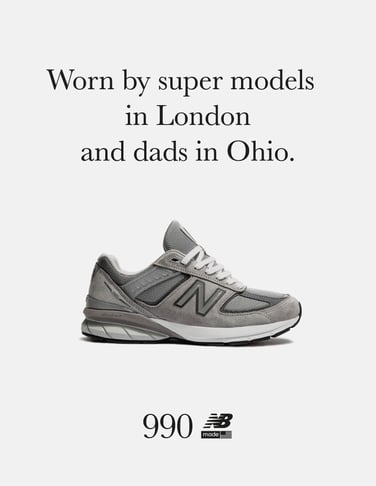
Source: Honoring the 990 sneakers pop-up museum.
Amsterdam’s fashion scene isn’t the only market not waiting for the proverbial shoe to drop. Many are jumping on the sneaker hype with 62% of respondents in a Hypebeast survey choosing footwear as their most bought streetwear product.
Rare sneakers have recently become a ‘global commodity’, according to The Times, with GenZ consumers making them an ‘asset of choice’.
In 2020, China was the world’s leading consumer of footwear. Which comes as no surprise, given both China’s population and its luxury consumption per capita. But in the same Hypebeast survey, 72% of luxury brands reported sneakers as their best-selling product globally.
With this emerging trend that is clearly here to stay, many people are now asking (in GenZ-like lingo): Why though?
Sure, sneakers effectively bridge the fashion gaps long-established by luxury and everyday wear. For Millennials and GenZ, sneakers are a mix-and-match go-to. Especially given the trend towards more discreet luxury products that are still able to signal wealth to other connoisseurs (we’ll get into this later on).
But sneakers also have a symbolic history. They are culturally significant and take the meaning of freedom of expression to whole new – billion-dollar – heights.

My Adidas And Me Close As Can Be
The popularity of sneakers as fashion products isn’t a 21st-century phenomenon. In the 1980s, sneakers were iconic markers of street identity. Hoodies, sweats, and baggy tees were reclaimed from being tied to notoriety and rebellion and repositioned into hip, ‘urban’ culture.
How did we get from the iconic dress of youth gangs to Balenciaga-totting celebrities?
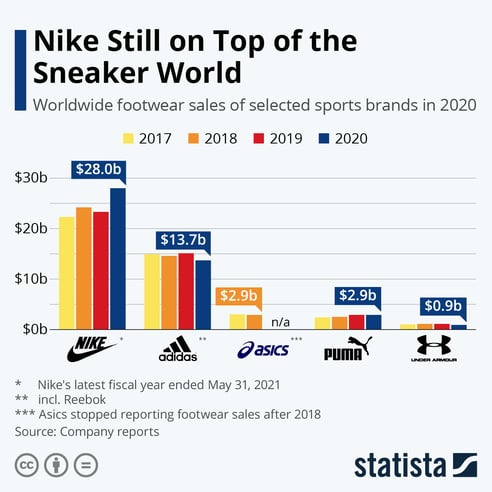
Source
In 1986, Run-D.M.C released a song about wearing Adidas sneakers in their third album Raising Hell. By this time, they were already one of the most influential hip-hop groups of the ‘80s. This cemented the running shoe into a culture of legacy, reflecting (like much of hip hop) the aesthetic and struggle of counter-culture.
In The History of Sneakers: How They Became Staples of Modern Fashion (The Collector), Adrienne Howell says that the rise of the sneaker market also paralleled the commercialization of sports.
Walt ‘Clyde’ Frazier became the first NBA player who signed his Puma sneakers in 1973. In the same decade, marketing in the NBA shifted from pure sports watching to pure entertainment (today, an NBA game will have t-shirt throwing contests, dances, and DJs at a bare minimum).
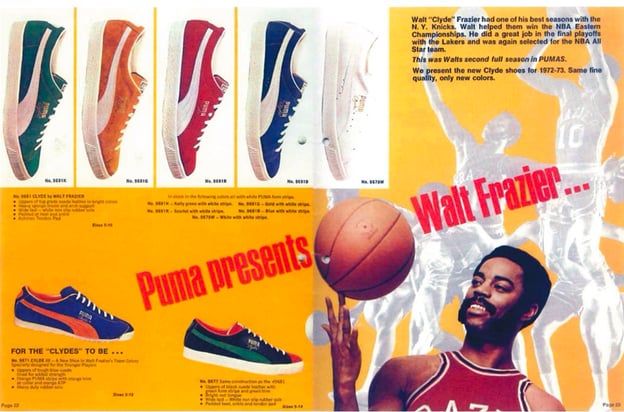
By the time Michel Jordan was wearing his brand of black and red, sneakers were already interesting for marketing campaigns. Enter: Jordan, and the controversial spin he brought to sneaker-wearing.
Since Air Jordan’s shoes were against the NBA’s uniform rules, every time Michael Jordan came on court wearing them he was fined $5,000. Legend goes this didn’t stop this basketball powerhouse, who already had a history of countering the Association’s’ rules (he was fined $25,000 for wearing number 23 instead of 45).
But this also presented an excellent marketing opportunity to hype sneakers up. They came to represent both rebellion and celebrity, once more solidifying their multilayered appeal.
Because guess who paid Jordan’s NBA fines?
Nike not only were rumored to pay the fines, but created a whole campaign around Jordan’s sneakers called ‘Banned'. Through a series of commercials, Nike made sure the public knew about the NBA rule, who broke it, and what brand he was wearing.
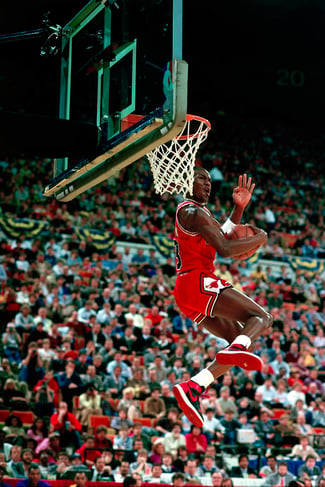
According to Complex, Jordan only actually wore his ‘banned’ Air Force 1’s at the Dunk Contest.
From counter-culture to celebrity-culture, the craze continues
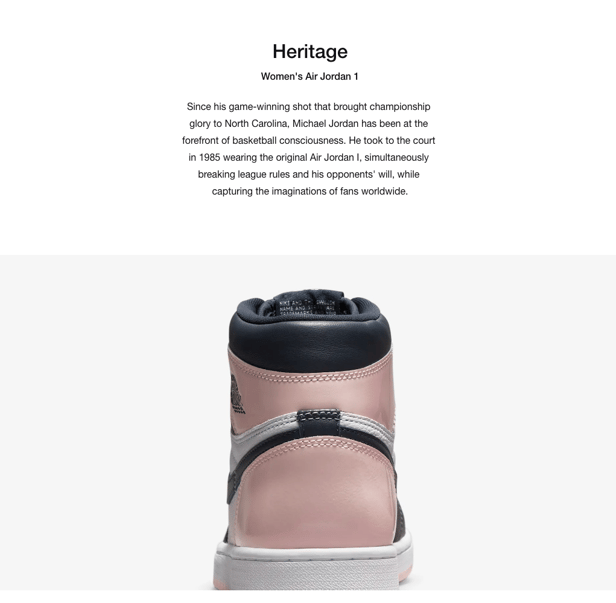
The story goes like this: The most famous basketball player of all time used sneakers (literally) as his piece de resistance. Soon thereafter, counterculture-aspiring musicians wanted a cut of the fame.
Kurt Cobain made converse cool for grunge, and Seu Jorge revived white and yellow Adidas sneakers in Wes Anderson’s cult-favorite The Life Aquatic with Steve Zissou.

Source: Seu Jorge wearing white and yellow Adidas in The Life Aquatic with Steve Zissou.
The thing is, when Air Jordan’s took off in 1985, their sale showed just how easy it was to mesh athletics with leisure (i.e., everyday wear). And how much people were willing to invest in sneakers as fashion items.
Today, their appeal is largely due to the rising trend of comfort. But rebellion, counter-culture, and individual expression aren’t far behind.
Comfort is Queen
Famous sneaker-celebrity collabs include Yeezy’s (Adidas x Kanye) Cardi B and Reebok, and PUMA x FENTY (Rihanna). Many Millennial sneakerheads also have an affinity to celebrity collabs with Travis Scott, Kanye West, and Pharrell Williams.
But using female role models is allowing the sneaker market to not only expand their audience but to resist the often male-dominated perception of sneaker-wearing.
As Howell puts it, “women are adding to the sneaker category because of their buying power and demand for representation in the modern fashion market.”
And while celebrities wear sneakers to penetrate an increasingly sneaker-savvy audience, in Silicon valley these shoes have become a status symbol. And for women, a symbol of emancipation.
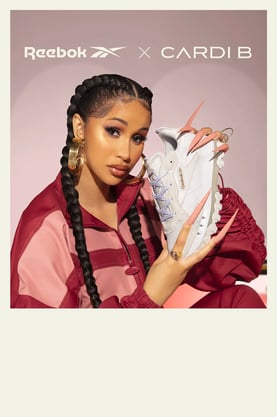
Source
Say goodbye to watches, and even the normcore fashion worn by Steve Jobs. For the affluent among us, sneakers take precedence. This ‘third wave’ of sneakerheads is coming back in full force, and this time relies heavily on the purchasing power of GenZ, digital innovation, and the rise of the resale market.
The psychology of sneakerheads today
The “Kanye Effect” is one thing, with the billion-dollar popularity of his Yeezy’s showing this at an unprecedented scale. But another thing making sneakers so popular is the shift towards comfort, especially as more people are now working from home.
‘Casual’ culture – probably fronted by normcore but disrupted by high-end fashion – is now closely intertwined with sports culture. But unlike the mainstreaming of athleisure, sneakerheads still operate within a certain subculture.
“Sneakerheads are defined as individuals who collect, trade, and/or admire sneakers. In addition, most are knowledgeable about the history of sneakers and are passionate about the nostalgic factors the sneakers possess.” - Matthews, Cryer-Coupet, Degirmencioglu (Fashion and Textiles)
“There is a pop-culture currency [to] footwear,” says Arwa Haider for BBC. “For sneakerheads, there is a style of trainer for every taste and identity.”
And according to Kawamura, “Wearing the “right” pair of sneakers elevates [men] socially, psychologically, and emotionally, and it literally puts them on a social pedestal within their community.”
Identity-defining, conspicuousness (the move to ‘mix-and-match’ fashion), and the hedonic effect of sneaker culture are all psychological drivers we’ve noticed before... in luxury.
Sneaker drops: The luxury we can afford?
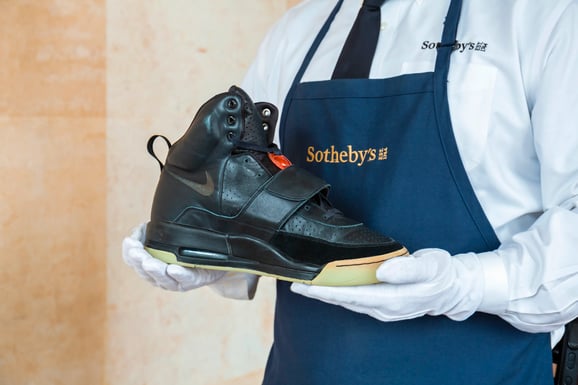
Source: The first-ever pair of Yeezy’s could fetch more than $1 million
Many of the emotional and psychological drivers behind sneaker-wearing in the 21st century are similar to the psychology behind luxury consumption. And that is probably why sneakers are the most bought luxury item at the moment.
We’ve written a report on the luxury consumer (their demographics, psychographics, and psychology). You can download it at the end of this article.
What can be said is that the overlap between luxury goods and sneakers is largely be attributed to the psychological principles of rarity and scarcity.
(Sneakerheads trailer) The sneaker hype has become such a cultural phenomenon, Netflix’s show documents this subculture.
How many sneaker drops take advantage of fleeting moments (i.e., ‘shoe drops’ in sneakerhead-speak)? Brands like Supreme purposefully saturate the market with limited amounts of their products to support scarcity of consumption. In psychology, the more scarce a product, the more it can drive behavior (and, in some cases, frenzy described as ‘hype’).
According to Kawamura, “sneakers are a subtle and a latent expression of conspicuous consumption. The general public would not recognize their value, and only the insiders are able to share the meaning, and that is the very reason that the community can be called a ‘subculture’.”
Conspicuous consumption is the signaling of an expensive product to other connoisseurs – otherwise known as luxury being flashy. But sneakers also represent a paradox of this urge. By being both street and high-end, they manage to disrupt luxury conspicuousness from within.
It’s the commercialization of coolness that is making this community a subculture. And sneakers are the symbolic product of ideas, attitudes, and beliefs that accompany a generation of streetwear, sportswear, and cult.
Streetwear and sneakers: The social currency of our times
In Fort Lauderdale, Sneakercon is a convention that brings enthusiasts together. This year in Zurich, Amsterdam, and Rotterdam you have Sneakerness. Their tagline says,
“Be sure to experience what’s much more than just a shoe”.
Sneakers have long been symbolic of their times. They’ve represented resistance, reclamation, and now they’ve come to represent the power of resale and reinvention.

Today, they also confirm the growth of a billion-dollar industry that both capitalizes on community and bridges the gap between unattainable luxury and the everyday. Making sports health cool. And charging communities with freedom of expression, through collabs and customization.
Psychologically, the rise of sneaker culture gives back control to the customer.
Commercially, sneakers pave the way for a direct-to-consumer (DTC) approach.
For women, it allows a chance for empowerment.
For men, an opportunity of expression.
In short, new kicks on the market are giving everyone the kicks. This is an industry that is growing, capitalizing on the interest in limited edition, the psychological bias that scarce is sexier, and the commercialization of cool in both sports and streetwear.

